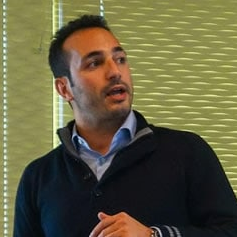Advances in Agriculture 4.0
A special issue of Future Internet (ISSN 1999-5903). This special issue belongs to the section "Smart System Infrastructure and Applications".
Deadline for manuscript submissions: closed (20 July 2023) | Viewed by 8072
Special Issue Editors
Interests: communications and networking; Internet of Things; pervasive and physical computing; sensor networks; industrial informatics; location and context awareness; informatics in education
Special Issues, Collections and Topics in MDPI journals
Interests: agricultural robots; biomimetic robots; control engineering; automation systems
Interests: sustainable management of waste and natural resources
Special Issues, Collections and Topics in MDPI journals
Special Issue Information
Dear Colleagues,
The fourth agricultural revolution, known as Agriculture 4.0 in analogy to Industry 4.0, refers to the anticipated radical changes in agricultural production through the application of recent advances in Information Technology. Agriculture 4.0 is a term for the next big trends to impact this industry, including a greater focus on precision agriculture with the regular application of the Internet of Things (IoT), autonomous robots, big-data (from sensors, earth observation, logistics, etc.), and Artificial Intelligence (AI), to drive greater business efficiencies, make smarter planning decisions, and lower the environmental footprint. These technological innovations are expected to play a major role in addressing the four main challenges, identified in the 2018 report published by the World Government Summit, facing future agricultural production: rising populations, scarcity of natural resources, climate change, and food waste.
With Agriculture 4.0, the whole agri-food chain will become more competitive and profitable, through the extended use of smart networked sensors, automation systems, and information technology. Deeper insight and precise advice for plant requirements will empower farmers to minimize agricultural input (water, nutrients, plant protection, etc.) thus minimizing environmental and health hazards, but also to scale production further by reducing space requirements, growing periods, and logistic chains. Labor-intensive tasks will be undertaken by autonomous ground robots or unmanned aerial vehicles, equipped with machine vision systems and precision telemetry. Tighter specifications and traceability – made possible by data connectivity – will boost quality across the supply chain to meet the demands of local and international food markets and to increase consumer trust.
The goal of this Special Issue is to disseminate high-quality, state-of-the-art research papers that deal with challenging issues in Agriculture 4.0. We solicit original papers of unpublished and completed research that are not currently under review by any other conference/magazine/journal. Topics of interest include, but are not limited to, modeling and applied approaches, at various scales (from lab to field and global), including engineering aspects and agronomical impact of the following:
- Advances in sensors technologies for Agriculture 4.0;
- Advances in communications and networking for Agriculture 4.0;
- Advances in autonomous robotic systems and unmanned aerial vehicles for Agriculture 4.0;
- Blockchain technologies for Agriculture 4.0;
- Food traceability and supply chain management for Agriculture 4.0;
- Low-power and energy-efficient Agriculture 4.0;
- Advances in machine vision for Agriculture 4.0;
- Cloud/fog/edge/extreme edge computing for Agriculture 4.0;
- Sensor and data fusion for Agriculture 4.0;
- Advances in profiling and human–computer interfaces for Agriculture 4.0;
- Machine learning and computational intelligence for Agriculture 4.0;
- Decision support systems for Agriculture 4.0;
- Data analytics for Agriculture 4.0.
Dr. Spyros Panagiotakis
Dr. Michael Sfakiotakis
Dr. Ioannis N. Daliakopoulos
Guest Editors
Manuscript Submission Information
Manuscripts should be submitted online at www.mdpi.com by registering and logging in to this website. Once you are registered, click here to go to the submission form. Manuscripts can be submitted until the deadline. All submissions that pass pre-check are peer-reviewed. Accepted papers will be published continuously in the journal (as soon as accepted) and will be listed together on the special issue website. Research articles, review articles as well as short communications are invited. For planned papers, a title and short abstract (about 100 words) can be sent to the Editorial Office for announcement on this website.
Submitted manuscripts should not have been published previously, nor be under consideration for publication elsewhere (except conference proceedings papers). All manuscripts are thoroughly refereed through a single-blind peer-review process. A guide for authors and other relevant information for submission of manuscripts is available on the Instructions for Authors page. Future Internet is an international peer-reviewed open access monthly journal published by MDPI.
Please visit the Instructions for Authors page before submitting a manuscript. The Article Processing Charge (APC) for publication in this open access journal is 1600 CHF (Swiss Francs). Submitted papers should be well formatted and use good English. Authors may use MDPI's English editing service prior to publication or during author revisions.
Keywords
- Agriculture 4.0
- sensors
- telemetry
- Internet of Things
- robotics
- machine vision
- big data
- machine learning
- AI
- food traceability
- supply chain
- blockchain
- networking
- precision agriculture







